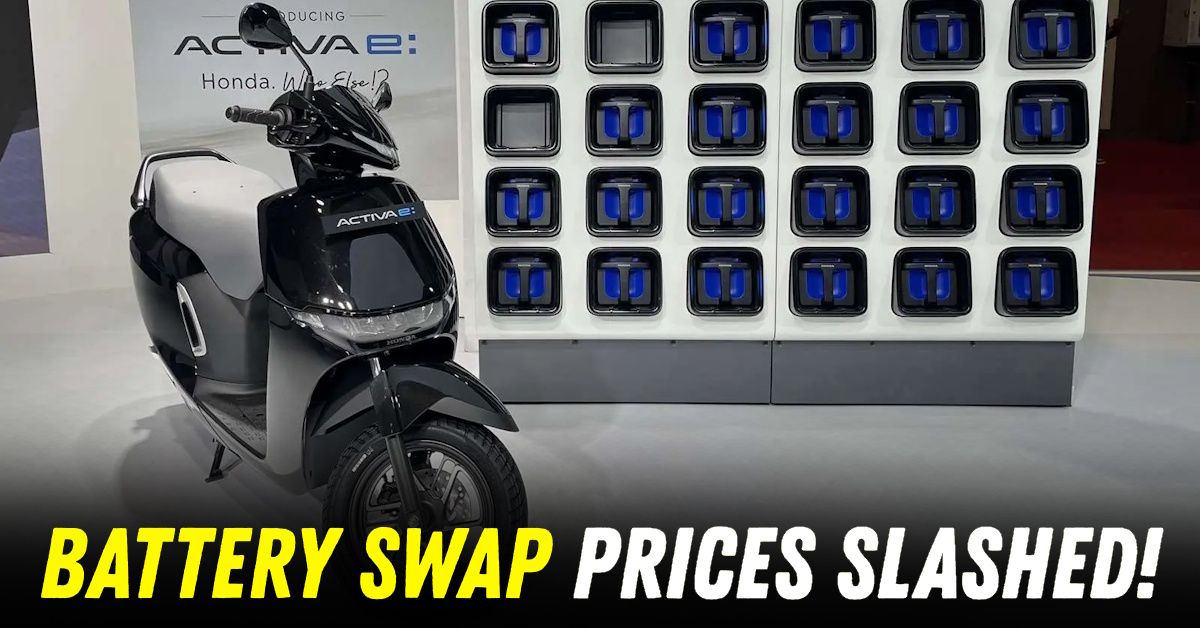Honda Slashes Activa E Battery Swap Plan Cost as Sales Slide


In a move that signals both course correction and urgency, Honda has reduced the cost of its battery swap subscription plan for the Activa E, the company’s flagship electric scooter, amidst underwhelming sales. This isn't just a price revision. It’s a tacit admission that the company’s original strategy for battery swapping hasn’t worked as intended. While the update may offer temporary relief, it raises a deeper question: can pricing alone fix a flawed product philosophy?
The most significant update to the Activa E is the new Honda e:swap Energy Plan (Basic). This plan now costs ₹899 per month, down from the earlier ₹1,250. For this amount, users get access to 12 battery swaps per month at Honda’s designated e:swap stations. Additional swaps beyond this limit are charged at ₹180 per battery.
To further sweeten the deal, Honda has also introduced a quarterly plan. At ₹2,697, it essentially allows users to lock in the discounted ₹899-per-month rate for three months straight. This, Honda hopes, will lower the running costs of the Activa E and increase its attractiveness in a market that is becoming increasingly crowded with feature-rich, plug-in alternatives.
However, the question remains: is pricing really the core problem here?
When Honda launched the Activa E, it was banking on the success of a unique proposition: skip the traditional home charger altogether and shift to a swap-only model. This decision, while bold, turned out to be a misjudgement of user preferences.
For daily commuters, the absence of home charging was not a minor inconvenience. It was a deal-breaker. Swapping batteries meant planning trips around swap station availability. It meant being unable to charge the scooter overnight at home or top up at work. Worse still, it meant paying more per kilometre than rival scooters with home chargers.
Buyers did the math, and many walked away. Some shifted to Honda’s own QC1, a simple commercial scooter that doesn’t promise innovation but delivers reliability. Others looked at alternatives from Hero, TVS, Ather and Ola, all of which offer flexible charging options.
At ₹899 for 12 swaps, the revised plan brings the Activa E’s running cost closer to what users expect from an electric scooter. The upfront price of the scooter is also lower due to battery rental, which in theory makes it a more accessible option.
But affordability was never the only concern. The underlying problem is lack of freedom. Riders don’t want to be told where to charge or when to swap. The appeal of electric mobility lies in simplicity and autonomy. Take that away, and even a strong brand like Activa begins to look unconvincing.
The new pricing does make the proposition better, especially for users in cities where Honda’s swap infrastructure is strong. But it still feels like a workaround, not a solution. Most riders would rather pay ₹1,000 and plug in at home than save ₹300 but depend on a station 3 km away.
Honda’s electric journey is still in its infancy, and the Activa E was never going to be perfect. What the company has quickly learned, however, is that brand loyalty doesn’t guarantee EV success. Users are tech-savvy, value-conscious and increasingly aware of their options.
To compete in this space, Honda must offer flexibility, not just in pricing, but in usage. Future electric scooters need to include home-charging as standard, with battery swapping as a supplementary option. That’s the model working for others. And that’s what users expect.
The revised battery plan is a step forward, but only if it’s followed by more meaningful changes in how Honda approaches EV usability. Because in this segment, convenience isn’t a luxury. It’s the bare minimum.